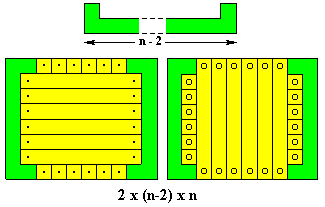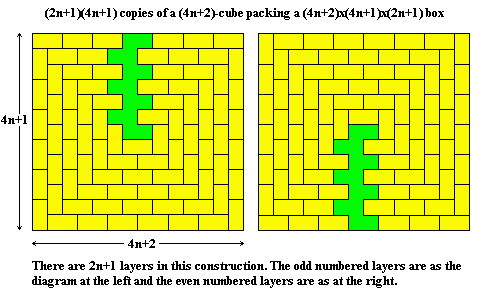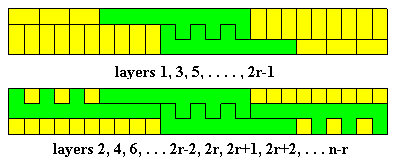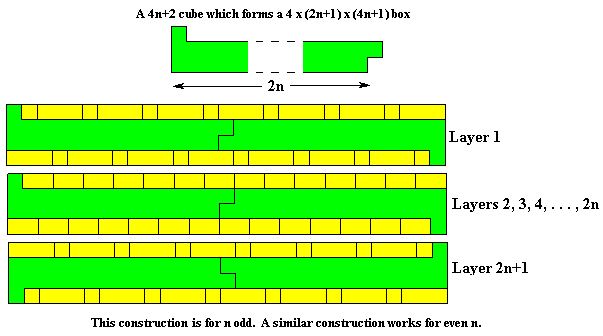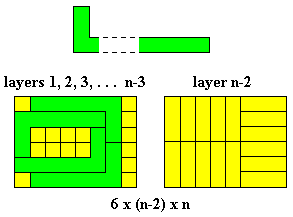As with polyominoes in rectangles we can sometimes pack sets of congruent polycubes into 'boxes'. A lot of information on this is given in Tiling and Packing results of Torsten Sillke - Packing Polycubes and this page will provide a sample of the data available and include some results not found elsewhere on the Internet.
The diagrams on this page use the convention that a dot represents a continuation upwards, a circle downwards and a dot in a circle shows continuation up and down.
Tetracubes
With one notable exception all prime boxes for the tetracubes are known for all dimensions. The list of prime boxes are given below. The left hand column gives the three dimensional boxes and four and five dimensional primes are listed in the right hand column. Diagrams are also available for all these boxes.
This is the only tetracube for which the full set of primes is in doubt. It is possible that a prime of the form 3 x m x n could exist.
This is the only tetracube where we must consider mirror images. This leads to two sets of prime boxes - with and without using both pieces. If the mirror pairs are considered the same then there are 5 prime boxes.
If, however, we consider mirror pairs as distinct then there are 20 prime boxes.
Pentacubes







